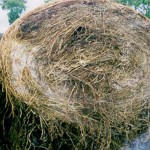Understanding and Reducing Mold Growth in Hay
Understanding and Reducing Mold Growth in Hay by S. Ray Smith University of Manitoba An ideal hay should contain maximum digestible energy and protein to meet the needs of high producing livestock. Several factors can reduce an ideal hay lot into an average or fair lot. One of the most frustrating factors that results in downgraded […]
Read More...




